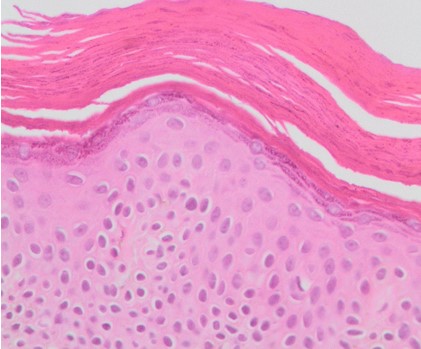Rusty Pipe Syndrome: First Case Report in Colombia
##plugins.themes.bootstrap3.article.details##
Objective: Report the first case of Rusty Pipe Syndrome in Colombia; with the aim to give tools to physicians that help them set out the differential diagnosis in patients with bloody nipple discharge.
Results: A 33 years old puerperal women shows a bilateral painless telorrhea in the first hours after vaginal delivery. A gram coloration was carried out, which resulted in the low leukocyte reaction and gram-positive cocci. The ultrasound reported a BIRADS I. The telorrhea yielded spontaneously. It was considered a Rusty Pipe syndrome.
Conclusions: Little is known about this clinical condition. It is not usually within the differential diagnoses in cases of bloody nipple discharge associated with breastfeeding. There is limited evidence published in Latin America about this topic.
Key Words: Breast Feeding, Breast Milk, Postpartum Period, Puerperal Disorders (MeSh).
EnglishBreast Feeding, Breast Milk, Postpartum Period, Puerperal Disorders
2. Silva JR, Carvalho R, Maia C, Osório M, Barbosa M. Rusty Pipe Syndrome, a Cause of Bloody Nipple Discharge: Case Report. Breastfeed Med. 2014 Oct 14;9(8):411–2.
3. Amparo, Navarro L, Tarrazó M, Balanzá R. Sindrome de las tuberías oxidadas: reporte de caso. Vol. 62, Revista Peruana de Ginecología y Obstetricia. Sociedad Peruana de Obstetricia y Ginecología; 2016. p. 295–7.
4. Cizmeci MN, Kanburoglu MK, Akelma AZ, Tatli MM. Rusty-pipe syndrome: A rare cause of change in the color of breastmilk. Vol. 8, Breastfeeding Medicine. 2013. p. 340–1.
5. Sabate JM, Clotet M, Torrubia S, Gomez A, Guerrero R, De Las Heras P, et al. Radiologic evaluation of breast disorders related to pregnancy and lactation. Vol. 27, Radiographics. 2007. p. S101–24.
6. Virdi VS, Goraya JS, Khadwal A. Rusty-pipe syndrome. Vol. 38, Indian Pediatrics. 2001. p. 931–2.
7. Guèye M, Kane-Guèye SM, Mbaye M, Ndiaye-Guèye MD, Faye-Diémé ME, Diouf AA, et al. Rusty pipe syndrome in a 22-year-old primigravida at 26 weeks’ gestation. S Afr J Obstet Gynaecol. 2013 Jan 25;19(1):17–8.
8. Thota U, Machiraju VM, Jampana VR. Rusty pipe syndrome: A case report. Health (Irvine Calif). 2013;5(1):157–8.
9. Barco I, Vidal M, Barco J, Badia À, Piqueras M, García A, et al. Blood-stained colostrum and human milk during pregnancy and early lactation. J Hum Lact. 2014 Nov 12;30(4):413–5.
10. Faridi M, Dewan P, Batra P. Rusty pipe syndrome: Counselling a key intervention. Breastfeed Rev. 2013 Nov;21(3):27–30.
11. Çintesun E, Gül A, Akar S, Ezveci H, Çelik Ç. Rusty pipe syndrome. Perinat J. 2017 Aug 1;25(2):85–6.
12. Ballesio L, Maggi C, Savelli S, Angeletti M, Rabuffi P, Manganaro L, et al. Adjunctive diagnostic value of ultrasonography evaluation in patients with suspected ductal breast disease. Radiol Med. 2007 Apr 20;112(3):354–65.
13. Kline TS, Lash S. Nipple Secretion in Pregnancy: A Cytologic and Histologic Study. Am J Clin Pathol. 1962 Jun 1;37(6):626–32.
14. Shamir R. The Benefits of Breast Feeding. Nestle Nutr Inst Workshop Ser. 2016;86:67–76.

This work is licensed under a Creative Commons Attribution 4.0 International License.


